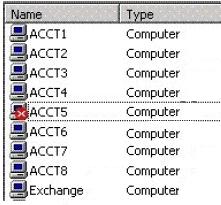MCSA/MCSE Practice Exam 70-290 Questions 41-60/184
- MCSA
- MCSE
2.
You may optionally provide this to label your report, leaderboard, or certificate.
×
Thank you for your feedback!

















